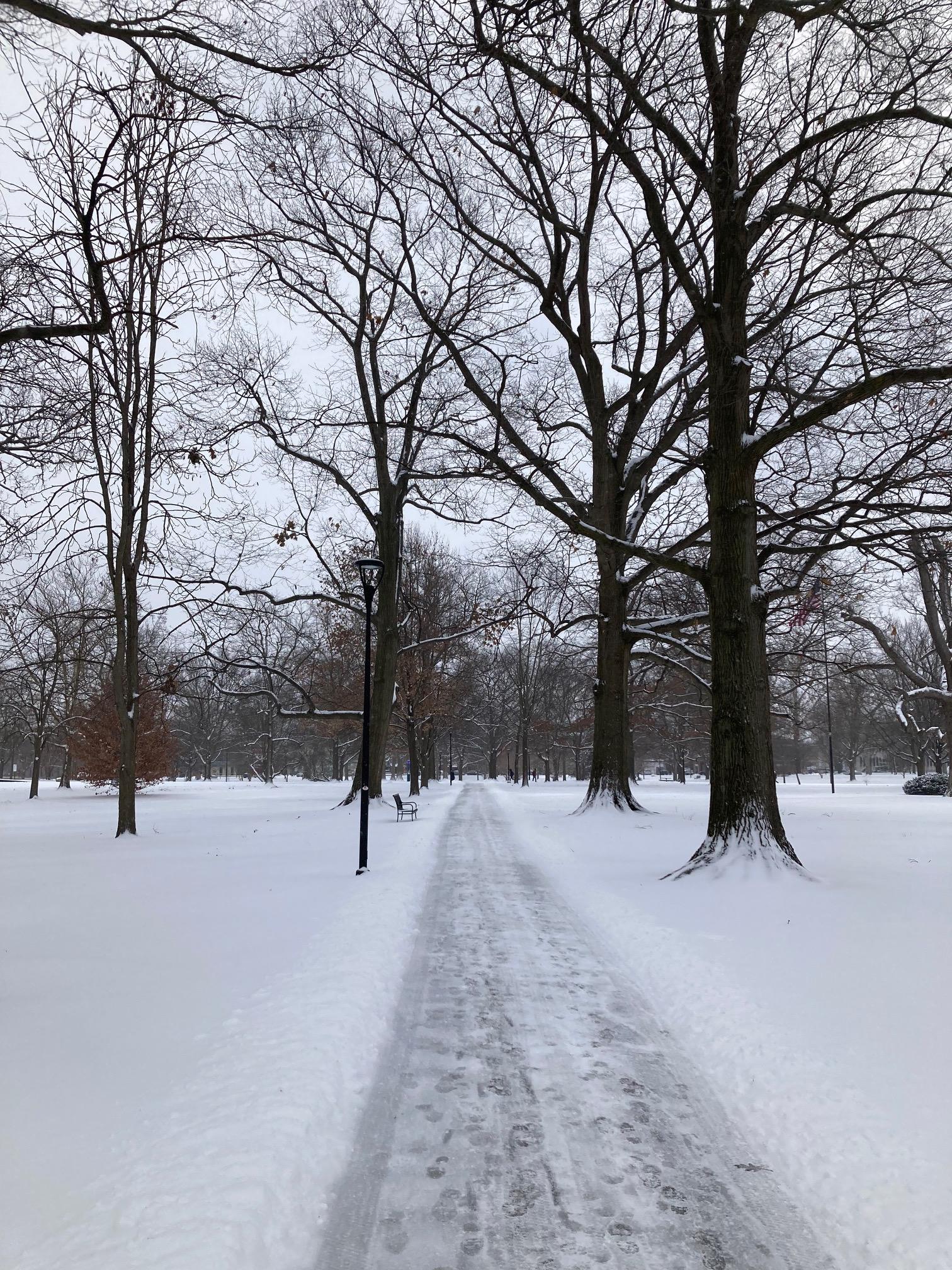Morning After Snow
This is the winter of my contentment; when snow blankets the ground, when all is soft and white and lustrous in the morning sun. Wakening to fresh snow never fails to invigorate and inspire me, for no matter how muddy the ground or dour the mind, all is forgotten for a time!
Sometimes, the wind bites at one’s ears with icicle teeth, and all save the most determined (or foolhardy!) seek shelter indoors. But even then, the snow is beautiful. When the winds have come and gone, and the powder lies heaped in dunes at the base of trees, one might even forget the pain of chilly ears to walk and wonder at the winter world.
Small Sparks of Great Rage
The failure of an elastic band, be it a mask or a hair tie, invariably provokes even the most rational and composed among us to apoplectic fits. Such a device has only one purpose, and to fail so completely when called upon is tantamount to treason.
Many are the devices in our lives that require regular feasts of electricity as we partake of meals. But while to forget a meal means merely to be hungry for some hours, when a laptop or phone does not partake of its vital essence, it can spell ruin for work and leisure.
To brave the grasping claws of the winter wind, to trade the warm embrace of home for the hope of a warm meal–so great a sacrifice the pilgrim makes, and so often they receive nothing but lukewarm eggs as a reward. Lean are the winter breakfasts at Stevenson, and leaner the hopes of those that seek them day after day.
Moments
Steam rising from a cup of tea as it steeps; outside, the snowflakes dance and drift.
Wandering in the evening with companions, one can find a warmth no wind can snatch away.
Ambush! The stillness shatters as snow and laughter fill the air. Later, once you have shaken the snow from your hood, you plot your revenge.
A friendly squirrel, hard at work finding her meals in the snowdrifts. Perhaps, she would like to pose for a photo?
The silence in the wake of snowfall.
Tales of a Winter Term Wanderer
Often in these chilly days, the work of storytelling calls me out early from my lodgings, steals me away for the daylight hours, and releases me only as dusk settles onto the campus grounds. Bundled in my thickest woolen scarves and coats, I wander in these twilight hours, and sometimes find my path crossing others’.
Once, on a bitterly cold evening, I was making swift steps from the halls of Stevenson back to my lodge when by chance I raised my head against the wind to see a truly intrepid soul braving the cold in pantaloons of the fashion and cut of beachgoers on a summer’s day. Here was I, no neophyte of winter myself, a walking pile of coats and scarves! Strange indeed are the fashions of this day, and I feel every day more a stranger to them.
Another time, I found a peaceful hour beneath the warm and welcoming roof of the Slow Train, only to see a most peculiar sight passing outside. Walking through the drifts of snow, a stalwart man cradling in his arms a most small and sorry dog. His fortitude I envy, and the dog’s melancholy I pity. Such honorable conduct many might forget, but his plight lives on in my writings here, and henceforth I think of him often whenever my thoughts wander to the walking of dogs.
What is the Pillow Book?
The original Pillow Book, or Makura no Soshi in the original Japanese, was a collection of memoirs, anecdotes, and musings recorded by the writer Sei Shonagon as reflections of her daily life in the court of Heian-era Japan. She was born around a thousand years ago, but her writings survive as a living, breathing, and occasionally strongly opinionated account of life in ancient Japan.
I first encountered the Pillow Book this fall, where we read excerpts from it as part of my Ancient Japanese History course. To try and wrap our heads around the cultural and artistic values of the time, Professor O’Dwyer gave us the assignment to write a short prose narrative in the style of Sei Shonagon. Not only was the exercise fascinating to me as a writer, it got me thinking about my time at Oberlin in a very different way.
Often, between classes and homework and rehearsals and all the myriad other things I do every day, the little moments of wonder that are scattered throughout my days get lost, trampled by the forward march of time. My goal here is not to be a chronicler so much as an artist, to paint with words the Oberlin experience as I have known it.
Maybe, in a thousand years, some archaeologist will even find these helpful in understanding what it was like to be a student at a small, liberal arts college in the year 2023.



